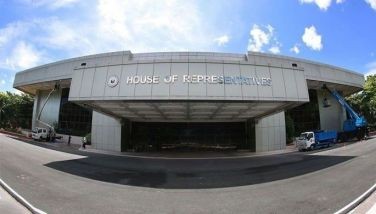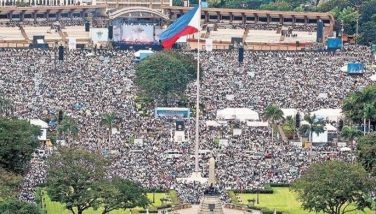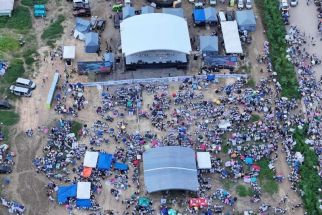BCDA’s Abaya: Serving with integrity and passion
March 19, 2007 | 12:00am
Since its inception in 1992 by virtue of Republic Act (RA) 7227, the Bases Conversion and Development Authority (BCDA) has been faithful to its mandate of accomplishing the twin gargantuan tasks of accelerating the sound and balanced conversion of the Clark and Subic military reservations and their extensions into alternative productive uses; as well as enhancing the benefits of this conversion to promote the economic and social development of the country specifically Central Luzon, as stipulated in the law creating it.
Today, after 15 years, BCDA president Gen. Narciso Abaya says they have concrete accomplishments that the public can expect to enjoy within the year and in the near future.
"I think we are doing well and there are some things we at BCDA can be proud of," Abaya beams.
Starting off with its major project  the Subic-Clark-Tarlac Expressway (SCTEx)  BCDA expects to unveil the country’s longest, very modern and efficient Subic-Clark-Tarlac Expressway towards the end of the year, one that is expected to rival the North Luzon Expressway (NLEX), which has set a benchmark for future toll roads in the country. In fact, Abaya says, the awarding of the contract to the winner of the bidding for the operations and maintenance (O&M) of the Subic-Clark-Tarlac Expressway Project (SCTEP) will be made within the month.
"The whole BCDA Board is very focused and has required progress reports at least every two weeks (from the contractors) to ensure that the project will be finished on time  or if, there’s a slight slippage, it will not be that significant," he points out.
The SCTEP is not an ordinary project. After all, it will serve as an impetus for the quickened development of the Central Luzon economic corridor. This 94.5-km., four-lane toll road network will connect Subic, Clark and Tarlac  thus, linking the seaport of Subic, logistics facilities of Clark, and the Diosdado Macapagal International Airport.
The SCTEP will also provide access to the other major economic players in the region, including those in Luisita Park in Tarlac and the Bataan Technology Park. The SCTEP has been touted as "the backbone of the new Central Luzon economic corridor."
Funded by the Japan Bank for International Cooperation (JBIC) at P20.969 billion in March 2005, the project could cost a bit less, at about P18.6 billion, due to the appreciation of the peso against the dollar.
Aside from finishing the project within budget, completing it on time and according to international standards are of prime importance to BCDA. As such, Abaya says, resolving the right-of-way (ROW) problem was a major goal which, he adds, they are doing successfully.
"If there’s anything we can be proud of, it’s that we are resolving the right of way (ROW) problems within schedule, unlike in other projects which are delayed for months or years," notes Abaya.
One strategy he used was to negotiate with the landowners to strike a deal that will achieve a win-win arrangement for both parties. He adds, though, that, if all possible means are exhausted and nothing is resolved, that’s the only time BCDA begins expropriation proceedings.
Speaking more like a true top corporate executive businessman and less as a military general, Abaya points to his having obtained an MBA from the University of the Philippines in 1980 (where he graduated with honors) and to his experience as Chief of Staff of the Armed Forces of the Philippines.
These twin achievements made it easy for him to navigate the transition to life in the corporate world. Moreover, his background as a civil engineer, having graduated from Lehigh University in Bethlehem, Pennsylvania, gave him the necessary academic preparation to handle the infrastructure projects inherent to the business of BCDA.
Likewise, being a former Chief of Staff of the AFP meant he had to serve as Chairman of AFP Retirement and Separation Benefits System, AFP Savings and Loan Association, AFP Mutual Benefit Association Inc., and the Centennial Savings Bank. Needless to say, his professional handling of these institutions was needed to assure their survival and profitability.
Aside from the SCTEP, Abaya notes, the disposition and eventual development of other military reservations like Fort Bonifacio, Villamor Airbase and Poro Point into productive uses comprise a significant part in BCDA’s mandate.
Of these assets, Abaya reveals that BCDA expect to reap the fruits of their labor soon. So far, Ayala’s development of Serendra in Fort Bonifacio is doing very well, where BCDA gets a certain percentage of revenues. By next year, the development of Villamor Air Base, in a joint venture with Megaworld, will showcase a convention center and a hotel to be operated by world-renowned Marriott. Along with these, residential units are now up for pre-selling. It is expected that, once the new airport finally gets to operate, this project will receive a big boost.
Poro Point in La Union, for its part, is being developed into a recreational and tourism hub especially with the expansion and rehabilitation of its San Fernando Airport. "We are extending the airport to accommodate 737s or 320s that will bring in tourists who can play golf and card games. Tourists will come from Macao, Japan and Korea. We have a locator, Las Vegas-based Thunderbird, that’s developing portions of Poro Point they are building a hotel, casino and resort villas," Abaya reveals.
Aside from these infrastructure projects, one of BCDA’s major accomplishments, according to Abaya, is the restoration of tax incentives to economic zones by Congress.
When the Supreme Court nullified the granting of tax incentives to ecozones as these stemmed only from an Executive Order, the locators became jittery and some even held in abeyance expansion plans in these ecozones.
BCDA, under Abaya, worked with both the House and Senate to have a piece of legislation passed restoring such incentives to locators in ecozones. With this, he expects investments to pour in steadily and increasingly to the ecozones, matched by the development of needed infrastructure, notably the SCTEP linking seaports and airports.
Abaya admits that a lot more work still has to be done by BCDA to fulfill its mandate "but, whatever success BCDA achieved so far has given him a lot of satisfaction since a large chunk of BCDA’s earnings goes to the AFP Modernization Fund. Admittedly, he says, it has not been easy to do a balancing act especially during times when he was at odds with some of his former colleagues on BCDA’s plans for the military reservations. He is convinced though that whatever he did can only redound to the betterment of the AFP and the whole country.
BCDA still has another 35 years of corporate life. Abaya would eventually pass on the torch to someone else sometime in the future. When that happens, Abaya wants to be remembered as "someone who has continuously served government with integrity and passion."
Today, after 15 years, BCDA president Gen. Narciso Abaya says they have concrete accomplishments that the public can expect to enjoy within the year and in the near future.
"I think we are doing well and there are some things we at BCDA can be proud of," Abaya beams.
Starting off with its major project  the Subic-Clark-Tarlac Expressway (SCTEx)  BCDA expects to unveil the country’s longest, very modern and efficient Subic-Clark-Tarlac Expressway towards the end of the year, one that is expected to rival the North Luzon Expressway (NLEX), which has set a benchmark for future toll roads in the country. In fact, Abaya says, the awarding of the contract to the winner of the bidding for the operations and maintenance (O&M) of the Subic-Clark-Tarlac Expressway Project (SCTEP) will be made within the month.
"The whole BCDA Board is very focused and has required progress reports at least every two weeks (from the contractors) to ensure that the project will be finished on time  or if, there’s a slight slippage, it will not be that significant," he points out.
The SCTEP is not an ordinary project. After all, it will serve as an impetus for the quickened development of the Central Luzon economic corridor. This 94.5-km., four-lane toll road network will connect Subic, Clark and Tarlac  thus, linking the seaport of Subic, logistics facilities of Clark, and the Diosdado Macapagal International Airport.
The SCTEP will also provide access to the other major economic players in the region, including those in Luisita Park in Tarlac and the Bataan Technology Park. The SCTEP has been touted as "the backbone of the new Central Luzon economic corridor."
Funded by the Japan Bank for International Cooperation (JBIC) at P20.969 billion in March 2005, the project could cost a bit less, at about P18.6 billion, due to the appreciation of the peso against the dollar.
Aside from finishing the project within budget, completing it on time and according to international standards are of prime importance to BCDA. As such, Abaya says, resolving the right-of-way (ROW) problem was a major goal which, he adds, they are doing successfully.
"If there’s anything we can be proud of, it’s that we are resolving the right of way (ROW) problems within schedule, unlike in other projects which are delayed for months or years," notes Abaya.
One strategy he used was to negotiate with the landowners to strike a deal that will achieve a win-win arrangement for both parties. He adds, though, that, if all possible means are exhausted and nothing is resolved, that’s the only time BCDA begins expropriation proceedings.
Speaking more like a true top corporate executive businessman and less as a military general, Abaya points to his having obtained an MBA from the University of the Philippines in 1980 (where he graduated with honors) and to his experience as Chief of Staff of the Armed Forces of the Philippines.
These twin achievements made it easy for him to navigate the transition to life in the corporate world. Moreover, his background as a civil engineer, having graduated from Lehigh University in Bethlehem, Pennsylvania, gave him the necessary academic preparation to handle the infrastructure projects inherent to the business of BCDA.
Likewise, being a former Chief of Staff of the AFP meant he had to serve as Chairman of AFP Retirement and Separation Benefits System, AFP Savings and Loan Association, AFP Mutual Benefit Association Inc., and the Centennial Savings Bank. Needless to say, his professional handling of these institutions was needed to assure their survival and profitability.
Aside from the SCTEP, Abaya notes, the disposition and eventual development of other military reservations like Fort Bonifacio, Villamor Airbase and Poro Point into productive uses comprise a significant part in BCDA’s mandate.
Of these assets, Abaya reveals that BCDA expect to reap the fruits of their labor soon. So far, Ayala’s development of Serendra in Fort Bonifacio is doing very well, where BCDA gets a certain percentage of revenues. By next year, the development of Villamor Air Base, in a joint venture with Megaworld, will showcase a convention center and a hotel to be operated by world-renowned Marriott. Along with these, residential units are now up for pre-selling. It is expected that, once the new airport finally gets to operate, this project will receive a big boost.
Poro Point in La Union, for its part, is being developed into a recreational and tourism hub especially with the expansion and rehabilitation of its San Fernando Airport. "We are extending the airport to accommodate 737s or 320s that will bring in tourists who can play golf and card games. Tourists will come from Macao, Japan and Korea. We have a locator, Las Vegas-based Thunderbird, that’s developing portions of Poro Point they are building a hotel, casino and resort villas," Abaya reveals.
Aside from these infrastructure projects, one of BCDA’s major accomplishments, according to Abaya, is the restoration of tax incentives to economic zones by Congress.
When the Supreme Court nullified the granting of tax incentives to ecozones as these stemmed only from an Executive Order, the locators became jittery and some even held in abeyance expansion plans in these ecozones.
BCDA, under Abaya, worked with both the House and Senate to have a piece of legislation passed restoring such incentives to locators in ecozones. With this, he expects investments to pour in steadily and increasingly to the ecozones, matched by the development of needed infrastructure, notably the SCTEP linking seaports and airports.
Abaya admits that a lot more work still has to be done by BCDA to fulfill its mandate "but, whatever success BCDA achieved so far has given him a lot of satisfaction since a large chunk of BCDA’s earnings goes to the AFP Modernization Fund. Admittedly, he says, it has not been easy to do a balancing act especially during times when he was at odds with some of his former colleagues on BCDA’s plans for the military reservations. He is convinced though that whatever he did can only redound to the betterment of the AFP and the whole country.
BCDA still has another 35 years of corporate life. Abaya would eventually pass on the torch to someone else sometime in the future. When that happens, Abaya wants to be remembered as "someone who has continuously served government with integrity and passion."
BrandSpace Articles
<
>
- Latest
Latest
Latest
December 17, 2024 - 12:00am
December 17, 2024 - 12:00am
December 16, 2024 - 10:00am
December 16, 2024 - 10:00am
December 5, 2024 - 12:00am
December 5, 2024 - 12:00am
November 29, 2024 - 9:30am
November 29, 2024 - 9:30am
November 28, 2024 - 8:00am
November 28, 2024 - 8:00am
November 25, 2024 - 1:00pm
November 25, 2024 - 1:00pm
Recommended






























